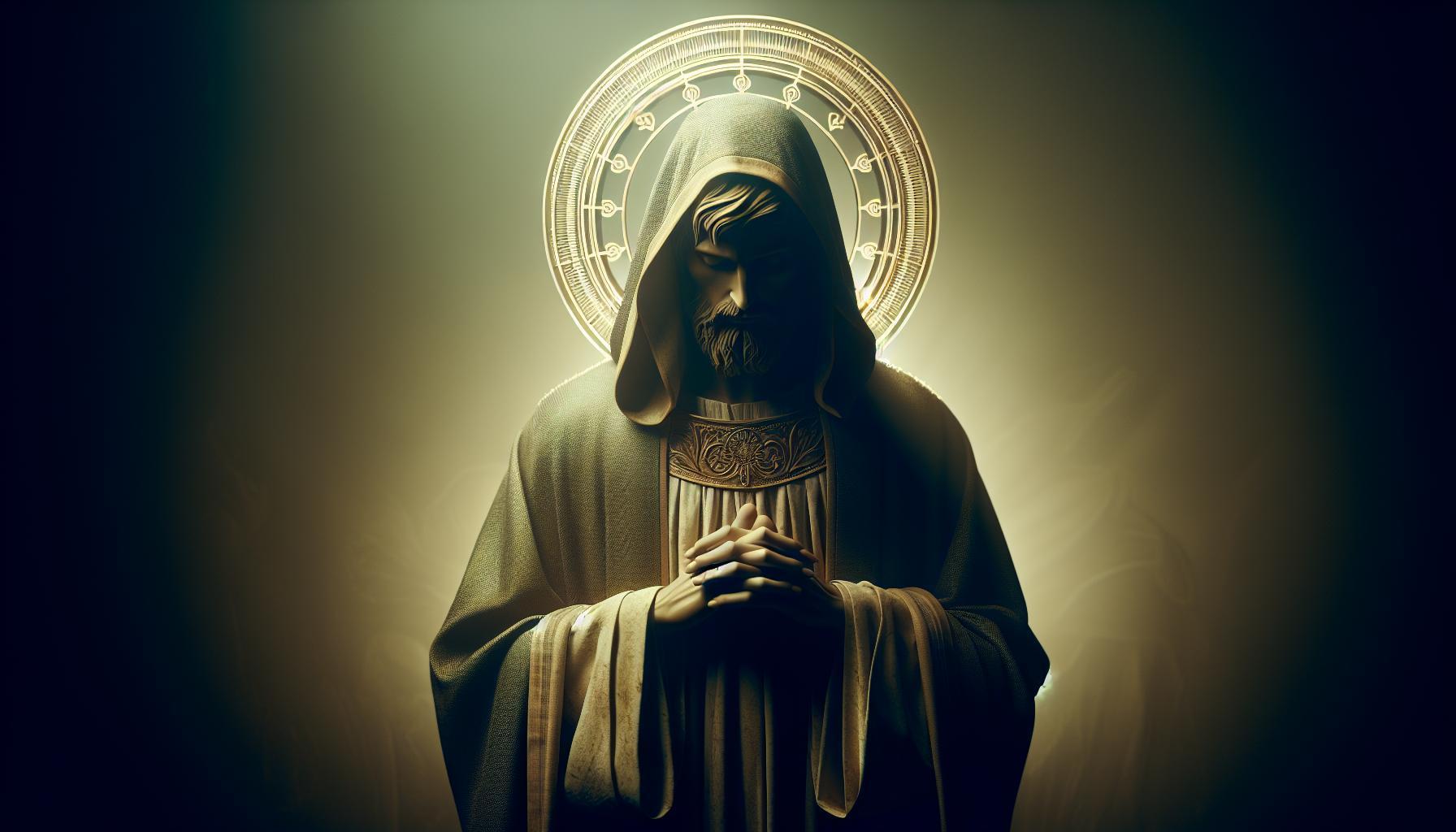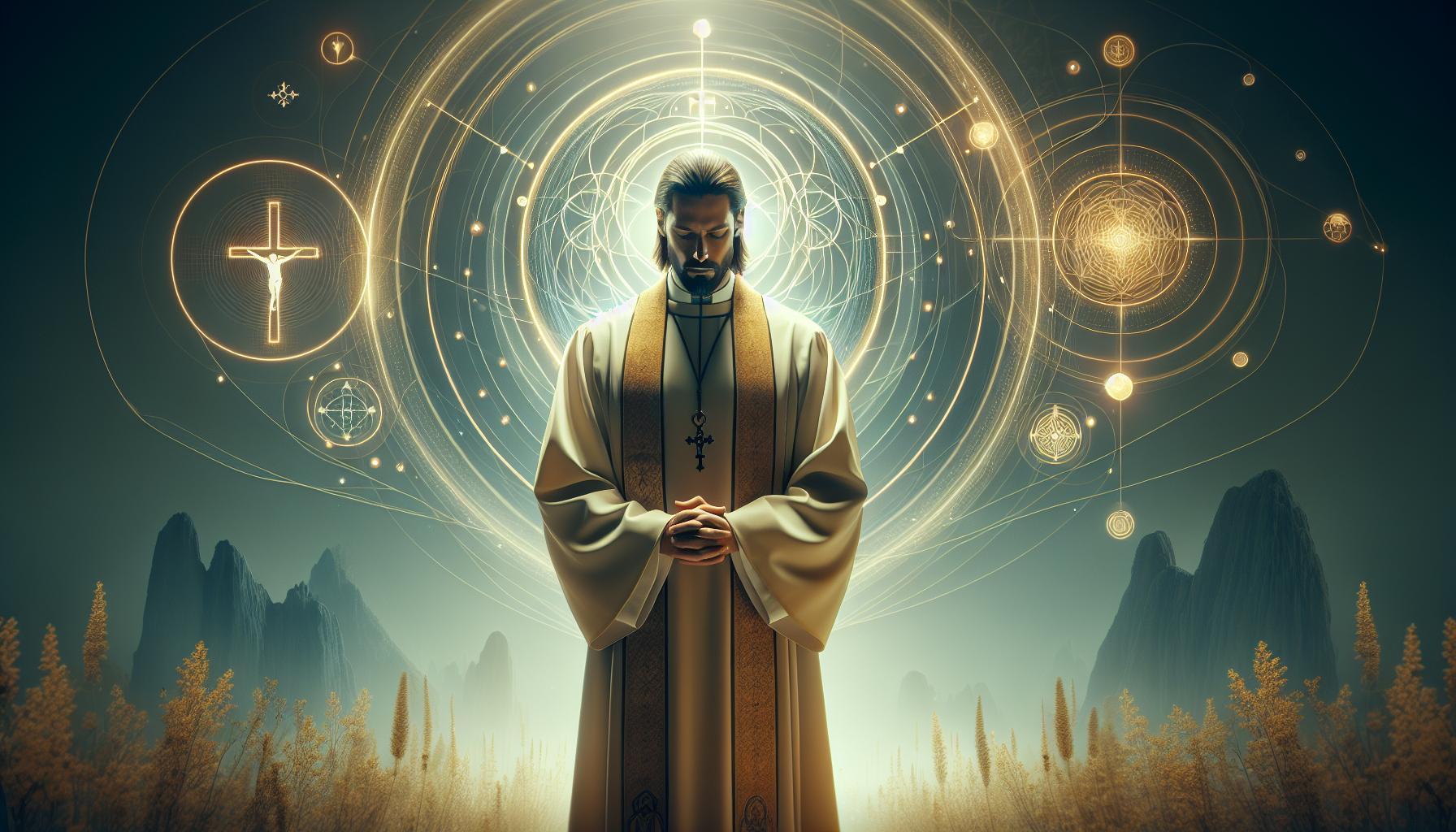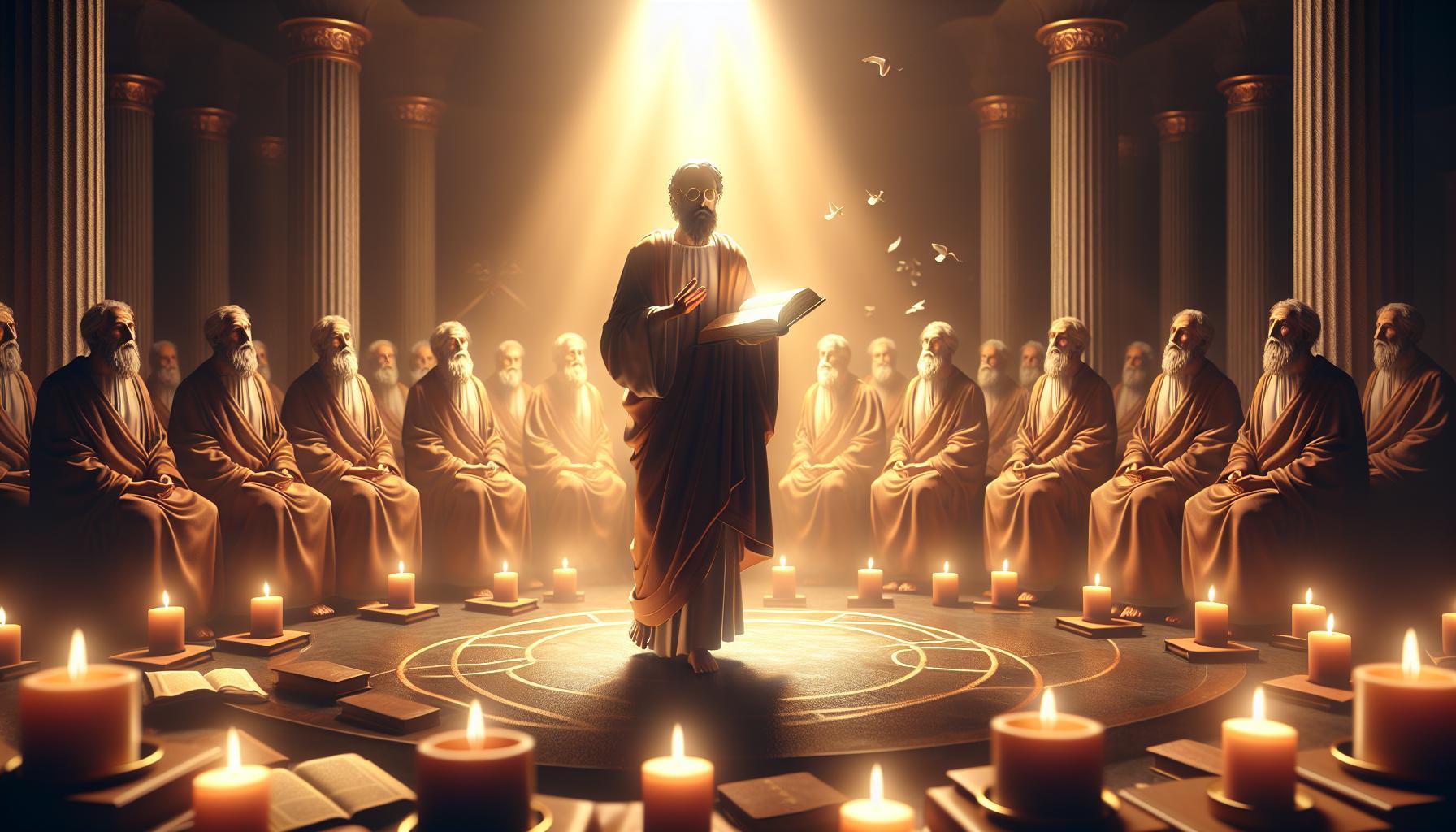In a world ravaged by chaos, the enigmatic figure known as Preacher emerges as a formidable antagonist in the Twisted Metal universe. Portrayed with depth and intensity, this character captivates audiences with his blend of menace and moral conviction. Exploring his portrayal not only reveals the complexities of his character but also highlights the thematic elements that enrich the narrative, making it a significant topic for fans and newcomers alike.
Understanding the Preacher: Character Origins and Inspirations
Understanding the Preacher’s origins in the realm of “Twisted Metal” reveals a complex character that intertwines themes of loss, redemption, and moral ambiguity. Although specific details of the character’s conception and influences aren’t explicitly documented, it is clear that the Preacher draws from archetypal figures found in literature and broader cultural narratives. This character serves as a haunting embodiment of the struggles between faith and despair, reflecting a compelling journey reminiscent of characters from classic tales.
To grasp the essence of the Preacher, one must consider various influences from literary and cinematic sources. For instance, his portrayal echoes elements of traditional spiritual leaders often depicted in dystopian settings, where faith is tested against the harsh realities of survival. This background could be likened to characters such as Jim Casy from John Steinbeck’s “The Grapes of Wrath,” who grapples with the meaning of holiness in a world that feels devoid of divine oversight. Casy’s transition from a preacher to a philosophical wanderer highlights a pivotal question: can a person maintain their faith when faced with overwhelming adversity? The Preacher in “Twisted Metal” embodies similar themes, haunted by his past and searching for purpose in a chaotic universe.
Moreover, the Preacher’s design and personality reflect a duality that resonates deeply with audiences. He represents the conflict between a sacred mission and the harshness of reality, employing a theatricality that is almost theatrical, akin to a tragic hero in modern folklore. This complexity allows players to engage with the character on multiple levels, as they witness his moral struggles and the consequences of his decisions. Aspects of his portrayal suggest that he is reflective, perhaps resembling figures like Opal’s father in “Because of Winn-Dixie,” who is characterized as introspective and deeply troubled, thus inviting players to ponder the deeper implications of his journey within the game.
In contemplating who plays the Preacher and how he is crafted in the narrative of “Twisted Metal,” it becomes evident that this character is not just a vehicle for action but a commentary on the human condition itself. Players are no longer simply participants in a game; they are drawn into a reflection of their own beliefs and moral dilemmas, creating an experience that transcends the confines of traditional gaming. By delving into the Preacher’s character, one gains insight into the broader themes of faith, despair, and redemption that resonate throughout the world of “Twisted Metal.”
The Preacher’s Role in Twisted Metal: A Story Within the Chaos
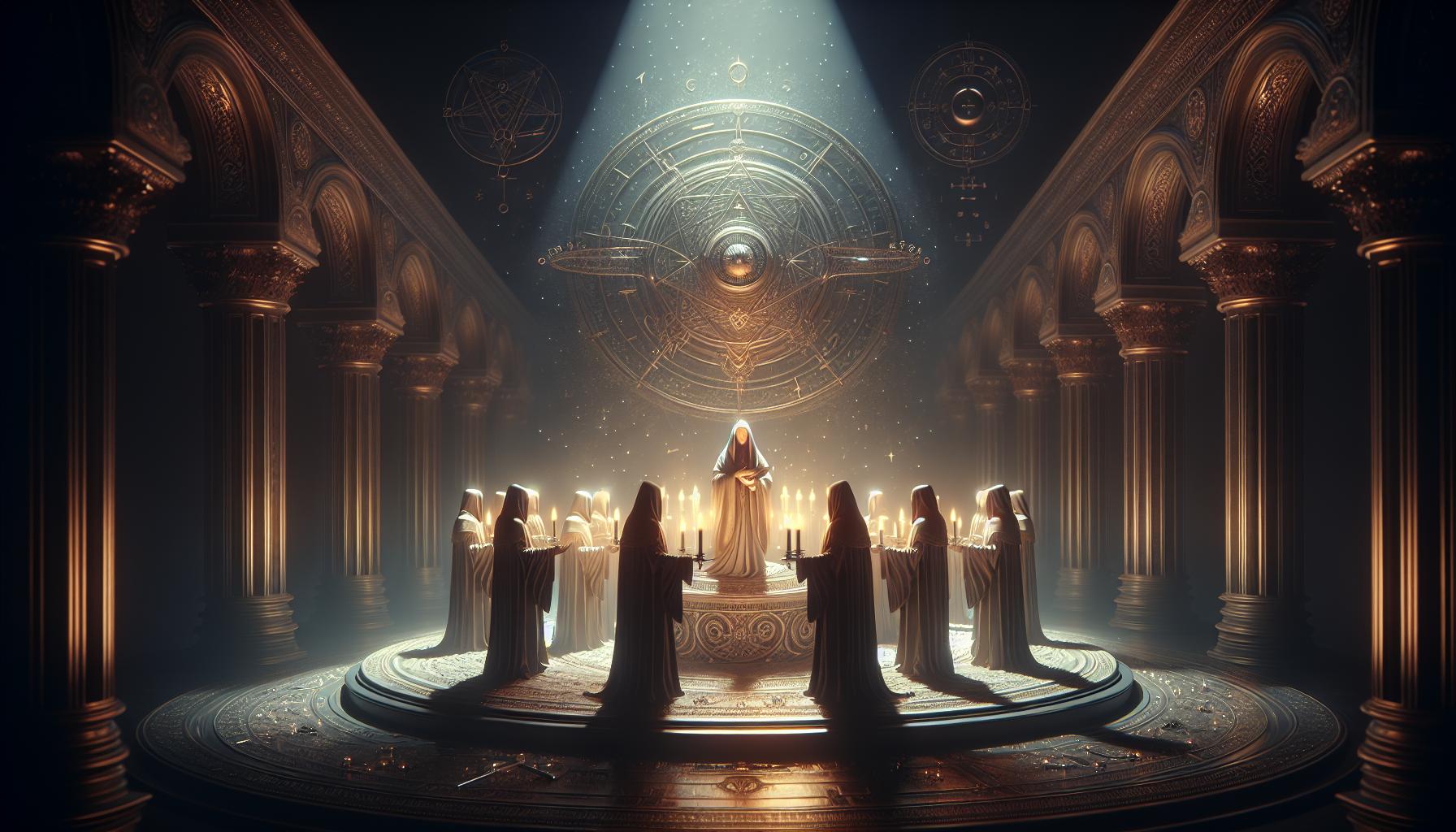
In the chaotic world of *Twisted Metal*, the character known as the Preacher stands out not only for his imposing presence but also for the profound themes he represents. Often depicted behind the wheel of his vehicle, Brimstone, Preacher is much more than a mere antagonist; he embodies the moral complexities within a landscape rife with violence and despair. Throughout the series, his character delves into the duality of faith and fanaticism, reflecting a journey littered with both madness and redemption.
Character Background and Motivation
The Preacher, whose real name is Jebidiah, is portrayed as an evangelist on a relentless quest for divine forgiveness. His driving motivation stems from a desire to return to the good graces of the Lord after succumbing to a life of sin. This quest, however, is overshadowed by his aggressive tactics and ruthless pursuit of his own version of salvation. His encounters often serve as a stark reminder of the perils of dogmatism, merging religious zeal with the brutality of his surroundings.
The character’s backstory adds depth to his motivations, making him a multifaceted figure within the *Twisted Metal* universe. He travels from town to town, sharing his warped religious vision while grappling with the consequences of his past actions. This internal struggle resonates with viewers, as it illustrates the fine line between a fervent belief system and the potential for violence it can incite. By creating a character who blends sorrow, rage, and a twisted sense of purpose, the series taps into a rich narrative vein that invites reflection on the nature of faith.
Portrayal in the 2023 TV Series Adaptation
In the new *Twisted Metal* television series, the Preacher is brought to life by an actor whose portrayal retains the character’s menacing essence while infusing it with new layers of complexity. The series reimagines various aspects of the original character while also paying homage to the emotional turmoil experienced by those trapped within the cycle of violence and redemption. The Preacher’s climactic moments, notably a pivotal confrontation that leads to dramatic consequences, emphasize the tension between his faith-driven motives and the chaotic reality he inhabits.
The juxtaposition of his actions against his religious fervor raises compelling questions for the audience. How does his pursuit of divine approval justify his aggressive methods? Is redemption truly achievable, or is he simply perpetuating the cycle of chaos that he claims to oppose? This character analysis not only enriches the narrative but also serves as a poignant commentary on the nature of belief in dire circumstances.
The Preacher’s role in *Twisted Metal* reflects larger existential themes, making him a powerful symbol of the struggle between faith, morality, and human flaws. As viewers engage with his character, they are invited to ponder deeper questions about the cost of redemption and the inherent chaos of the world around them.
Analyzing the Preacher’s Character Traits and Motivations

In the chaotic world of Twisted Metal, the character of the Preacher stands out as a captivating figure whose traits and motivations intricately weave a narrative that examines themes of redemption and despair. Portrayed as both a harbinger of doom and a pitiful man seeking salvation, the Preacher’s duality makes him a compelling antagonist within the game’s universe. This character, whose origins and intentions are explored in “Who Plays the Preacher in Twisted Metal: Character Analysis & Portrayal,” presents a complex psychological landscape that reflects deeper societal issues.
Character Traits
The Preacher exhibits several defining traits that shape his impact on the game and its players:
- Morality and Hypocrisy: The Preacher’s role as a religious figure imbues him with a sense of moral authority, yet his actions often contradict traditional values. This hypocrisy creates an unsettling juxtaposition that challenges players’ perceptions of right and wrong.
- Manipulativeness: He often employs his charisma to manipulate others, bending them to his will under the guise of spiritual guidance. This quality reveals a darker aspect of his character that leverages faith as a tool for control.
- Despair and Trauma: Rooted in a troubled past, the Preacher is characterized by his deep-seated despair. His backstory reveals personal losses and failures that fuel his motivation to engage in the brutal Twisted Metal tournament, offering a glimpse into the psychological scars that drive his actions.
- Resilience: Despite his anguish, the Preacher showcases remarkable resilience, positioning himself as a persistent force within the chaos, representing those who refuse to surrender to their demons.
Motivations Behind His Actions
The motivations steering the Preacher’s journey in Twisted Metal are as multifaceted as his character. Central to his drive is a quest for redemption, which manifests through his participation in the tournament. He seeks not only to escape his own past but also to impose his warped sense of justice on the world around him. This search for redress leads him down increasingly violent paths, effectively blurring the lines between martyrdom and villainy.
Another significant aspect of his motivation is the desire for control. Through his manipulative tactics, the Preacher attempts to exert influence over others, using their vulnerabilities against them. This behavior illustrates a profound fear of helplessness stemming from his own traumatic experiences, rendering his combative nature a misguided attempt to reclaim power over a world that has brought him pain.
Ultimately, the Preacher serves as a mirror reflecting societal struggles with morality, faith, and the consequences of personal trauma. His character in Twisted Metal encapsulates a broader commentary on how individuals navigate their complex relationships with themselves and the world, making him a vital figure within the narrative. Understanding the Preacher’s characteristics and motivations provides players with a richer context for engaging with the game’s themes, enhancing their overall experience and connection to the storyline.
The Impact of Voice and Performance: Bringing the Preacher to Life
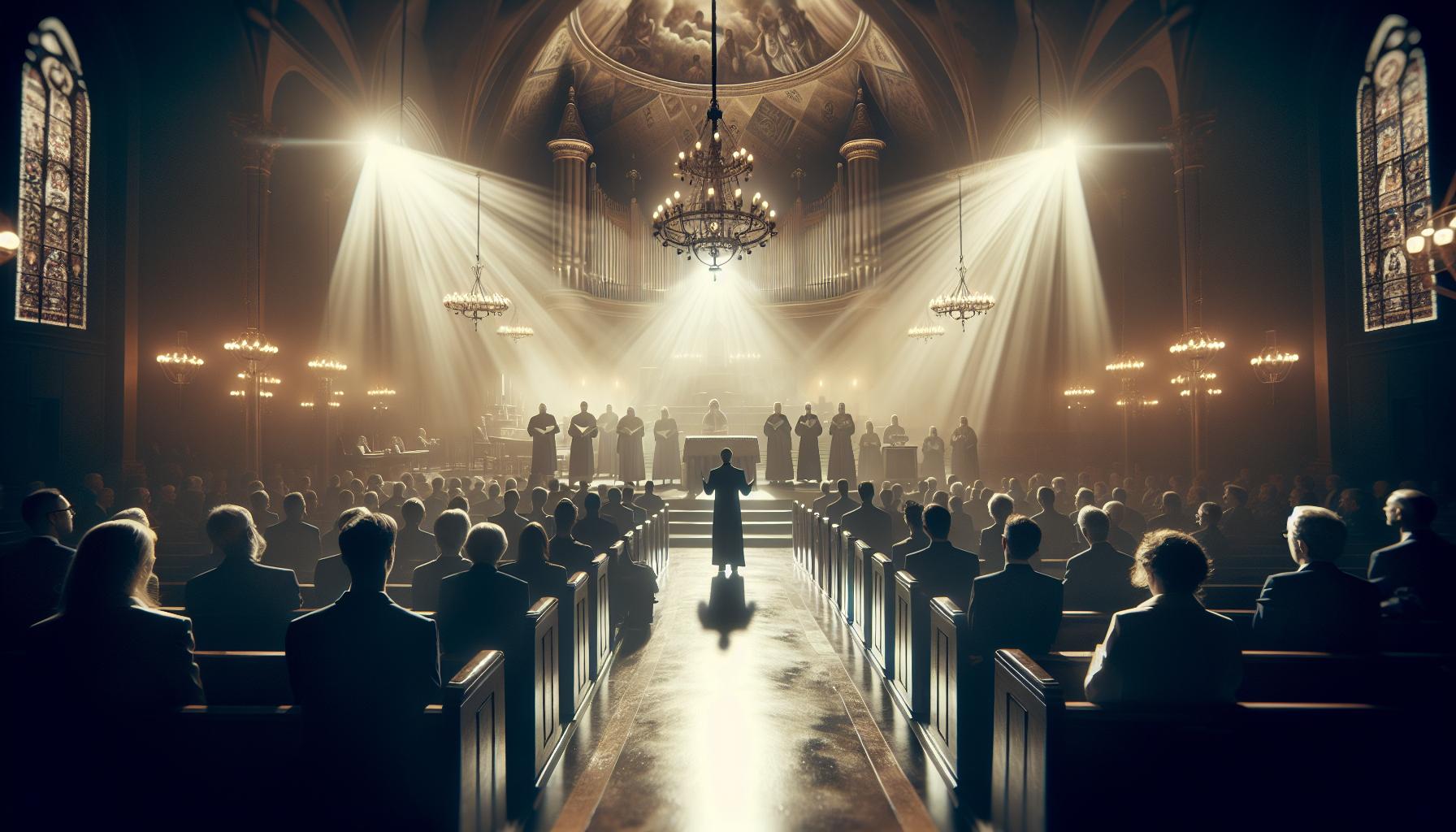
The Preacher in *Twisted Metal* not only serves as a compelling character but also emphasizes the profound impact of voice and performance in video game storytelling. Behind the character lies a voice actor whose skill brings an unsettling charisma that enhances the narrative’s dark themes. This interplay of vocal talent and character design serves to engage players on a deeper emotional level, establishing a connection that transcends the interactive medium.
A powerful voice performance can evoke a wide range of emotions—from fear to empathy—allowing players to experience the preacher’s complexities and motivations. The delivery of lines, combined with a perfectly timed cadence and intonation, can turn mere dialogue into chilling sermons that resonate with players long after the game is over. This method of performance can be dissected into several key elements that contribute to the Preacher’s impact:
- Vocal Range: The ability to shift between tones creates a dynamic personality that can be both menacing and sorrowful.
- Characterization: The voice actor’s unique interpretation enables players to feel the preacher’s intensity and conviction, making each encounter memorable.
- Contextual Delivery: Lines are tailored not just to the script but to the world of *Twisted Metal*, reflecting its chaotic and brutal environment.
Additionally, the physical embodiment of the Preacher during recording sessions brings life to the performance. Voice actors often utilize movements and gestures that may not be directly captured in the game but which inform how lines are delivered, adding an extra layer of authenticity to the character. This practice reinforces the notion that voice acting is a vital component of character portrayal, especially in a franchise known for its unique narratives and intense character backstories.
The significance of the Preacher’s voice in *Twisted Metal* illustrates a broader trend within the industry where memorable characters are often defined as much by their spoken words as by their visual design. Each utterance is crafted to invoke reactions, provoke thoughts, or unsettle players, thus solidifying the preacher’s role within the game as an unforgettable figure. Delving into the nuances of how voice performance shapes character perception enriches the overall gaming experience, making it essential for both enthusiasts and creators alike to appreciate the artistry involved in these vocal portrayals.
Theological Themes: What the Preacher Represents in Twisted Metal
In the chaotic universe of Twisted Metal, the Preacher stands as a compelling symbol of the juxtaposition between faith and destruction. This character is not merely a vehicle for violence; he embodies deeper theological themes that resonate throughout the series. His portrayal resonates with concepts of redemption, sin, and the often-blurred line between good and evil. The Preacher’s motivations and conflicts serve as a microcosm for broader questions of morality that challenge players to contemplate the nature of their actions within the game.
The Duality of Faith and Violence
The Preacher’s character serves to illustrate the radical dichotomy of faith intertwined with violence. His role as a preacher suggests a mission to spread the gospel; however, his methods often feature bloodshed and chaos as he participates in the brutal vehicular combat of Twisted Metal. This contradiction highlights a critical theme:
- Redemption through Chaos: The game suggests that even amidst destruction, there lies a pursuit of redemption, reflecting the paradoxical nature of spiritual reconciliation.
- Sacred vs. Profane: The Preacher’s presence evokes questions about how faith can be utilized for both uplifting and destructive purposes, resembling the way extreme metal music often intertwines sacred imagery with darker themes.
This duality invites players to ponder the implications of their choices, questioning whether there can be divinity in brutality or whether such a notion distances them from true salvation.
The Preacher’s Role as a Moral Arbiter
The Preacher’s presence in Twisted Metal transcends mere combat; he acts as a moral arbiter, prompting players to engage with ethical dilemmas. His character challenges the notion of traditional authority associated with religious figures. By portraying a preacher who resorts to violence, the game critiques conventional interpretations of morality, forcing players to confront their own judgments.
Furthermore, his narratives often revolve around themes of vengeance and justice. Players may find themselves questioning whether their actions align with divine will or represent a deep-seated rebellion against it. Such themes resonate with contemporary discussions in open and relational theology, which explores the complexities of divine involvement amidst human suffering and chaos [[1]].
Conclusion: A Reflection of Modern Theology
Ultimately, the Preacher in Twisted Metal encapsulates a nuanced exploration of faith’s intersection with despair and conflict. His characterization invites players not just to engage in combat, but to engage in deeper reflection on the nature of morality, redemption, and the human condition. In doing so, the Preacher becomes a symbol of how theological themes can manifest even in the most unexpected contexts, inviting an ongoing dialogue about the implications of our choices in the face of both divine and earthly authority.
Behind the Scenes: The Creation of the Preacher Character
The character of the preacher is as complex as it is compelling, steeped in a narrative that intertwines faith, power, and the grotesque. In *Twisted Metal*, the portrayal of this character draws influence from various sources, notably the rebellious spirit depicted in the comic book series by Garth Ennis. The artistic decisions behind the preacher’s creation are not merely for dramatic effect but are carefully crafted to resonate with the audience’s psyche, reflecting deeper themes of redemption and morality.
Casting decisions play a crucial role in bringing the preacher to life. The choice of actor significantly impacts how audiences relate to the character. For instance, an actor must embody the duality of a figure representing divine authority while navigating a morally ambiguous world. To achieve this, directors often look for performers who can balance charm with ambiguity. This casting choice enables a powerful exploration of the character’s theological dilemmas and personal struggles, making him relatable despite his extraordinary circumstances.
Creative Development and Direction
The creative team behind *Twisted Metal* sought to explore the preacher’s character in new and unexpected ways. This involves not just adapting the source material but also enriching the character’s background and motivations. Writers often delve into character studies, pulling from both historical and contemporary influences to enhance the preacher’s depth. This approach allows for a more nuanced depiction, pushing beyond standard tropes associated with religious figures.
- Emotional Depth: The preacher is depicted as a flawed and relatable character, grappling with his faith and the repercussions of his past actions.
- Thematic Exploration: Themes of redemption, sacrifice, and the struggle between good and evil are front and center in his narrative arc.
- Aesthetic Choices: Visual elements from costume design to set decoration are meticulously crafted to symbolize the internal and external conflicts faced by the preacher.
Through these layers of characterization and storytelling, the preacher becomes a vessel for exploring larger questions within a chaotic world. By examining the intricacies of who plays the preacher in *Twisted Metal*, we gain insight into not only the artistic vision behind the series but also the cultural commentary it provides, reflecting modern society’s struggles with faith and morality.
Audience Reception: How Fans View the Preacher’s Portrayal
In the realm of Twisted Metal, the portrayal of the Preacher character has ignited spirited discussions among fans, showcasing the diverse ways audiences interpret media content. The Preacher is more than just a character; he represents complex themes of morality, redemption, and vengeance, which resonate differently with various audience segments. This multifaceted reception can be influenced by fans’ cultural backgrounds, personal beliefs, and their own experiences, leading to a rich tapestry of interpretations.
Understanding Audience Interpretation
The diversity in audience reception can be attributed to several factors:
- Personal Connections: Many fans find that their own life experiences shape how they view the Preacher, whether as a figure of sympathy or a representation of judgment. This personal angle can make the character’s motives feel more relatable or, conversely, more alienating.
- Cultural Context: Viewers from different cultural backgrounds may interpret the Preacher’s actions and philosophies through their unique lens. For some, he may embody the struggle between good and evil, while for others, he might symbolize societal critiques.
- Ideological Beliefs: Reception Theory suggests that the ideological positions of the audience significantly impact their understanding. Individuals who frequently engage with themes of redemption may interpret the Preacher’s journey more positively compared to those who view his actions as flawed or misguided.
This complex interplay of factors demonstrates that audiences are not mere passive recipients of the character’s portrayal; they actively engage with and decode his significance based on their unique contexts.
Real-World Examples
Fans often express their interpretations in forums, social media discussions, and fan art, which further enriches the dialogue surrounding the Preacher character. For instance, social media platforms are rife with hashtags analyzing his moral dilemmas, prompting debates on topics like justice versus revenge. This engagement illustrates how communities can come together to dissect and discuss the implications of his portrayal, ultimately contributing to a larger narrative within the Twisted Metal universe.
By understanding these dynamics, creators and producers can better appreciate the impact of character portrayals and audience feedback, allowing them to craft stories that resonate on multiple levels. Engaging with audience interpretations not only enhances the viewing experience but also informs future content, making it more reflective of the diverse perspectives of its fans.
Overall, the character analysis of the Preacher in Twisted Metal reveals that audience reception is a vital component of storytelling, showcasing how a single portrayal can achieve varied meanings and drive meaningful conversations among fans.
Lessons from the Preacher: Insights for Contemporary Storytelling
In the realm of storytelling, the preacher archetype offers a wealth of insights that resonate across various narratives, including modern adaptations like Twisted Metal. This character often embodies complex themes of morality, redemption, and the struggle between divine and earthly desires. By examining characters like the preacher from Twisted Metal, creators can derive valuable lessons that enhance their storytelling craft.
Understanding the Preacher Archetype
At its core, the preacher often portrays a duality of purpose: the embodiment of spirituality and the critique of societal norms. Within Twisted Metal, this character’s philosophical insights encourage audiences to reflect on their own beliefs and the world around them. When crafting a contemporary narrative, consider the following elements that define the preacher archetype:
- Conflict of Belief: Characters like the preacher often grapple with their faith or moral code amidst a chaotic world. Presenting such internal conflicts can lead to more relatable and compelling storylines.
- Redemptive Arcs: The journey of a preacher frequently includes themes of redemption, allowing for deep character development as they seek forgiveness or understanding.
- Community and Connection: Preachers often unite characters and their communities, highlighting the importance of togetherness in facing challenges, which can be a powerful motif for modern narratives.
Creating Relatable Conflicts
To effectively incorporate the preacher character into contemporary storytelling, focus on relatable conflicts that challenge the character’s beliefs. Characters like the preacher in Twisted Metal, who must navigate their faith while confronting real-world issues, provide fertile ground for dramatic storytelling. Audiences appreciate narratives where characters must reconcile their ideals with the harsh realities of life, drawing them deeper into the story.
Real-World Applications
Understanding the motivations and struggles of a preacher-like character can be beneficial in multiple storytelling mediums. For instance, when writing a script or developing a video game, creators can:
- Emphasize Backstories: Craft rich, engaging backstories that explain the preacher’s motivations and past experiences. This will help audiences connect with the character on a personal level.
- Incorporate Symbolism: Use symbols associated with faith, such as light and darkness, to visually represent the character’s internal struggles and transformations.
- Invite Audience Reflection: Encourage audiences to reflect on their own values and beliefs through dialogue and plot choices that present moral dilemmas faced by the character.
By weaving these insights into narratives, especially those featuring characters like the preacher from Twisted Metal, storytellers can create layered, thought-provoking experiences that resonate with contemporary audiences. This character analysis enriches not only the characters themselves but also the overall narrative, making it relevant and impactful.
Frequently asked questions
Who plays the Preacher in Twisted Metal?
The Preacher in the Twisted Metal series is portrayed by the character Jebidiah. This character is a priest who embodies themes of redemption and violence.
Introduced in Twisted Metal: Black, Jebidiah’s complex personality mirrors the series’ dark themes. His role highlights a paradox of faith and turmoil, reflecting the struggle between good and evil that permeates the game. For more on his backstory, check our character analysis.
Why does the Preacher curse in Twisted Metal (2012)?
Despite being a priest, the Preacher’s gunner in Twisted Metal (2012) uses curse words, showing a contrast between his profession and actions.
This intentional contradiction adds depth to the character, emphasizing the moral struggles present within the chaotic world of Twisted Metal. The Preacher’s violent environment influences his language and behavior, further complicating his portrayal as a faith-driven character.
What is the role of the Holy Men faction in Twisted Metal?
The Holy Men faction, led by the Preacher, aims to confront the *demonic forces* in the Twisted Metal series, particularly targeting Calypso.
Though they do not directly appear in the story, their presence signifies a collective fight against evil. This group embodies themes of spiritual warfare and moral righteousness, adding layers to the narrative.
Can I play as the Preacher in Twisted Metal (2012)?
No, the Preacher is not a playable character in Twisted Metal (2012). He serves primarily as a background character within the game’s lore.
His unique role as a non-playable character helps to build the game’s narrative, while also showcasing the struggles faced by those caught in the tournament’s deadly conflicts. You can still see impactful scenes of him impacting the story.
What themes does the Preacher represent in the Twisted Metal series?
The Preacher embodies themes of *redemption*, *faith*, and the battle between good and evil throughout the Twisted Metal series.
His character arc resonates with players by highlighting the moral dilemmas faced in a corrupt world. Preacher’s journey illustrates how faith can struggle against adversity, making him a compelling figure in the ever-chaotic narrative of Twisted Metal.
Why is the Preacher an important character in Twisted Metal?
The Preacher is vital to the Twisted Metal series because he symbolizes the internal conflict between morality and chaos.
His storyline adds depth and complexity to the game’s overarching themes, making players reflect on the nature of sin, redemption, and the human condition amidst the madness of the tournament. His presence challenges players to consider the implications of their choices.
How does the Preacher’s character evolve throughout the series?
The Preacher’s character evolves from a representation of faith to a complex symbol of moral ambiguity, illustrating his struggles with violence.
Initially portrayed as a devoted priest, his experiences in the Twisted Metal world reveal the darker aspects of his character. This evolution reflects the game’s overarching messages about the corruption of ideals in extreme circumstances, making him a fascinating study of character development.
To Wrap It Up
In conclusion, the character of Preacher in the “Twisted Metal” series represents a complex intersection of faith, redemption, and violence, portrayed by a talented cast member in the recent TV adaptation. As we explore his motivations and background, we invite readers to engage with the deeper theological themes that underlie his journey. The Preacher’s quest for forgiveness resonates with many spiritual narratives, prompting reflections on grace and salvation that are meaningful across diverse religious traditions. We encourage you to delve deeper into his story, consider its implications in your own life, and share your insights. Your engagement could lead to a richer understanding of how characters like Preacher reflect our shared human desire for redemption and understanding in an often chaotic world. Explore the layers of this character further, and let us know your thoughts and interpretations!

